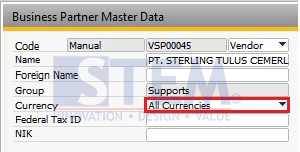
While buying and owning real estate is a good financial strategy, if you're not sure how to begin, here are some tips and strategies to get started. There are many different ways to invest in realty, so you need to consider many things before you make a decision. Read on to learn the average return on investment, the most common mistakes to avoid, and some important tips to help you get started. Remember, this is your money!
Real estate ownership and buying is a good financial strategy
It is possible to make a lot of money by buying and owning real estate. The property can be a profitable investment as long that you don't spend any more than what you earn. This strategy works well for those who want to spread out their payments. The monthly rent income should equal the monthly mortgage payment. This strategy allows you to keep renting out your property as it grows in value.
Buy and hold real estate is a great way to leverage your money and take advantage of a rapidly growing market. You don't need to sell your property if you opt for a buy-and-hold strategy. This results in a lower monthly payments. The rental income can be used to repay the principal of the loan and build wealth over time. Buying and holding real estate can also protect you against inflation.

There are many avenues to invest in realty
The most popular real estate investment is a primary residence, which is usually purchased with a mortgage and built up through monthly payments. This equity can be used to cash in on a strong market. You can build wealth by investing in your primary residence, even though the annual average return is lower than what you might expect. Homes increased by 3.9% between 1994 and 2019.
A real-estate investment trust (REIT) is a great way to invest in passively if you're looking to make passive investments in real estate. These funds offer investors a variety benefits including predictable returns as well as liquidity and relative simplicity. Real estate investment trusts often pay dividends. This is a valuable source for income. But if you'd rather not take the time to learn how to invest in real estate, there are also many ways to diversify your investment portfolio.
The average return on real estate investments
Real estate investments are not only able to generate high returns but also have tax advantages. Investors can enjoy tax benefits that can increase their net worth by up to 4 per cent each year. These returns are not possible for all real estate investments. Some can even lose money. The following facts can help you determine if real-estate investment is right. Let's see what the average return is for investing in real property.
To determine the average rate of return, you must consider the total investment you made in the property. Assume that you invest $200,000 with a minus of one-half% to close costs and ten percent to renovate the property. In this example, the annual return would be $10,000. The expenses would then total $1,500. Divide this amount by the total investment in the property to find the IRR. Excel or a calculator is required to determine the cash on capital return.

Consider these key points before you invest in real estate
You should understand the financial factors that will impact your decision to invest in real estate. A list of your current cash flow, financial obligations, and budget is a good place to start. Your credit score is a key factor in how much you can borrow. It is possible to make a bad decision if you don’t know how a property’s value will be assessed.
The next thing to consider is your budget. If you plan on investing in residential property, make sure you have a clear idea of the cost of maintaining it. You also have to deal with tenants. This can lead to issues down the line. It is also important to know the laws and taxes that govern real estate. You may make poor decisions that can cause long-term financial trouble.
FAQ
How are securities traded?
The stock market allows investors to buy shares of companies and receive money. Companies issue shares to raise capital by selling them to investors. When investors decide to reap the benefits of owning company assets, they sell the shares back to them.
The supply and demand factors determine the stock market price. When there are fewer buyers than sellers, the price goes up; when there are more buyers than sellers, the prices go down.
Stocks can be traded in two ways.
-
Directly from the company
-
Through a broker
Who can trade on the stock exchange?
Everyone. However, not everyone is equal in this world. Some people have better skills or knowledge than others. They should be recognized for their efforts.
Trading stocks is not easy. There are many other factors that influence whether you succeed or fail. If you don’t have the ability to read financial reports, it will be difficult to make decisions.
This is why you should learn how to read reports. It is important to understand the meaning of each number. It is important to be able correctly interpret numbers.
This will allow you to identify trends and patterns in data. This will assist you in deciding when to buy or sell shares.
If you are lucky enough, you may even be able to make a lot of money doing this.
How does the stock market work?
You are purchasing ownership rights to a portion of the company when you purchase a share of stock. A shareholder has certain rights over the company. He/she is able to vote on major policy and resolutions. The company can be sued for damages. The employee can also sue the company if the contract is not respected.
A company cannot issue any more shares than its total assets, minus liabilities. This is called capital sufficiency.
A company with a high ratio of capital adequacy is considered safe. Low ratios can be risky investments.
What are the benefits to owning stocks
Stocks are more volatile that bonds. If a company goes under, its shares' value will drop dramatically.
But, shares will increase if the company grows.
To raise capital, companies often issue new shares. This allows investors to purchase additional shares in the company.
Companies use debt finance to borrow money. This gives them cheap credit and allows them grow faster.
If a company makes a great product, people will buy it. The stock's price will rise as more people demand it.
Stock prices should rise as long as the company produces products people want.
Statistics
- Even if you find talent for trading stocks, allocating more than 10% of your portfolio to an individual stock can expose your savings to too much volatility. (nerdwallet.com)
- The S&P 500 has grown about 10.5% per year since its establishment in the 1920s. (investopedia.com)
- Our focus on Main Street investors reflects the fact that American households own $38 trillion worth of equities, more than 59 percent of the U.S. equity market either directly or indirectly through mutual funds, retirement accounts, and other investments. (sec.gov)
- "If all of your money's in one stock, you could potentially lose 50% of it overnight," Moore says. (nerdwallet.com)
External Links
How To
How to open an account for trading
First, open a brokerage account. There are many brokerage firms out there that offer different services. There are some that charge fees, while others don't. Etrade (TD Ameritrade), Fidelity Schwab, Scottrade and Interactive Brokers are the most popular brokerages.
After opening your account, decide the type you want. Choose one of the following options:
-
Individual Retirement Accounts (IRAs).
-
Roth Individual Retirement Accounts
-
401(k)s
-
403(b)s
-
SIMPLE IRAs
-
SEP IRAs
-
SIMPLE 401K
Each option offers different advantages. IRA accounts have tax advantages but require more paperwork than other options. Roth IRAs allow investors deductions from their taxable income. However, they can't be used to withdraw funds. SIMPLE IRAs and SEP IRAs can both be funded using employer matching money. SIMPLE IRAs require very little effort to set up. Employers can contribute pre-tax dollars to SIMPLE IRAs and they will match the contributions.
The final step is to decide how much money you wish to invest. This is called your initial deposit. Most brokers will offer you a range deposit options based on your return expectations. For example, you may be offered $5,000-$10,000 depending on your desired rate of return. The lower end of this range represents a conservative approach, and the upper end represents a risky approach.
After choosing the type of account that you would like, decide how much money. Each broker has minimum amounts that you must invest. These minimum amounts can vary from broker to broker, so make sure you check with each one.
After choosing the type account that suits your needs and the amount you are willing to invest, you can choose a broker. Before you choose a broker, consider the following:
-
Fees: Make sure your fees are clear and fair. Brokers often try to conceal fees by offering rebates and free trades. Some brokers will increase their fees once you have made your first trade. Don't fall for brokers that try to make you pay more fees.
-
Customer service: Look out for customer service representatives with knowledge about the product and who can answer questions quickly.
-
Security - Make sure you choose a broker that offers security features such multi-signature technology, two-factor authentication, and other.
-
Mobile apps - Check if the broker offers mobile apps that let you access your portfolio anywhere via your smartphone.
-
Social media presence: Find out if the broker has a social media presence. If they don't, then it might be time to move on.
-
Technology - Does this broker use the most cutting-edge technology available? Is the trading platform simple to use? Are there any issues when using the platform?
Once you've selected a broker, you must sign up for an account. Some brokers offer free trials. Others charge a small amount to get started. After signing up you will need confirmation of your email address. Next, you will be asked for personal information like your name, birth date, and social security number. You'll need to provide proof of identity to verify your identity.
Once verified, you'll start receiving emails form your brokerage firm. These emails will contain important information about the account. It is crucial that you read them carefully. You'll find information about which assets you can purchase and sell, as well as the types of transactions and fees. Keep track of any promotions your broker offers. These could be referral bonuses, contests or even free trades.
The next step is to create an online bank account. An online account can usually be opened through a third party website such as TradeStation, Interactive Brokers, or any other similar site. Both sites are great for beginners. You will need to enter your full name, address and phone number in order to open an account. Once you have submitted all the information, you will be issued an activation key. This code is used to log into your account and complete this process.
Now that you've opened an account, you can start investing!